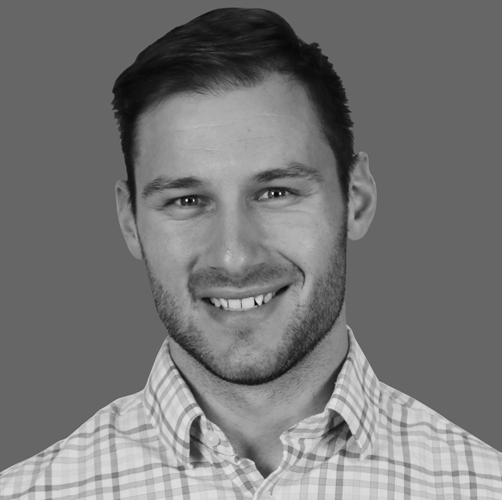Preventing and treating common knee injuries in the winter
Learn about common knee injuries and what we can do before, during, and after to stay active and optimize your health during the winter.

Much like the shocks in your car help soften your ride down the road, your knees absorb most of the shock during everyday activities and sports alike. Taking a look at winter sports in particular, we can all agree that the knees take quite a beating out on the slopes, the rink or on the court, making it all the more important to take care of them. With the winter sport season in full swing, we sat down with one of our doctors of physical therapy, Jonathon Mendola, to discuss common knee injuries and what we can do before, during, and after to help keep our clients active and optimize their health through the winter season.
What are the most common knee injuries that you see during the winter season?
During the winter, we tend to see an uptick in injury of the anterior cruciate ligament (ACL) suffered while skiing. This type of injury, can range from a partial tear of the ACL only, to a full rupture, sometimes even involving injury to the meniscus and/or the medial collateral ligament (MCL) within the knee. Other common winter sports injuries to the knee include fractured kneecap, or patellar dislocation, common in many winter sports.
What can clients do to help prevent knee injury?
Do we wait until we have engine trouble to change our oil or wait until our tires are flat to get new ones? Of course not! There are plenty of things that people can — and should — do to prevent injuring their knees. For starters, they can take a driver’s seat in injury prevention by meeting with a movement professional such as a physical therapist or qualified personal trainer to go through a movement screening in order to assess their overall functional movement mechanics and thus possible warning signs for potential injury.
What I think many athletes don’t realize is that just because you don’t have pain, doesn’t mean that you are in tip-top-shape. The most common areas for improvement that we see in the physical therapy realm are the hips and core. We often see that those clients who have either poor glute or core strength/endurance are often the ones who come through with injuries to their knees. This lends the question, “why?”
In an ideal world of biomechanics and kinesiology, our bodies are meant to move in a synchronous manor from one segment to the next; a chain if you will, from one link to the next. Here, the time old saying “as strong as the weakest link” rings true. With poor stability in the core or glutes comes poor transitioning of forces and control of load through the knees.
What should someone do if they have knee pain but do not think that they have an acute injury?
Sometimes we experience pain. There is nothing wrong with having some soreness after we go hard on the court are had a day full of moguls on the slopes; you earned that soreness! With that said, it is on you to make sure you give your body the recovery it needs after what you put it through. Recovery comes in many forms; while some may yearn for a good drink in the lodge/paddle hut, there are a few options I recommend to my clients.
Some simple low-tech options include Epsom salt baths, ice packs or sports massages. If you are a bit more adventurous or into tech, you may pair well with vaso-pneumatic compression devices such as Normatec, infrared sauna, or nitrogen-driven cryotherapy. Now while those are good for post activity recovery, it is also important for athletes to take things such as their nutrition, sleep and stress into account as these three factors play a huge role in the body’s capacity and speed of restoration on a global level.
What if a client falls while participating in their sport and thinks they hurt their knee? What should they do?
If a client suffers an acute injury, they should seek medical attention sooner rather than later. Depending on the severity of the injury, athletes can see a number of professionals varying from their primary care physician to a physical therapist directly. What many athletes don’t realize is that in many states, including Connecticut, a client can be seen by a physical therapist without a prescription from the doctor for up to six visits, which means you can get access to physical therapy much more quickly. One of the most exciting parts of my job is being able to be that catalyst to help clients not only get better but also to help them get into the right doctor for their injury — while some injuries can be handled without seeing one, there are often times when the right doctor is crucial to your recovery. At the end of the day, having a good team around you can make all the difference, whether you are working to prevent injuries or treat them.

Jon Mendola
Jonathon Mendola, DPT, PT, CSCS, is a detail-oriented physical therapist and certified strength and conditioning specialist. He is particularly interested in working with patients post-op.
RECENT POSTS
CATEGORIES

> Privacy Practices
> Terms and Conditions
Copyright © Performance 2022.
All rights reserved.
JOIN OUR COMMUNITY
Sign up for our mailing list to learn more about Performance, stay up-to-date on our offerings, and receive our newsletter.
Digital Marketing by Rebel Interactive Group
